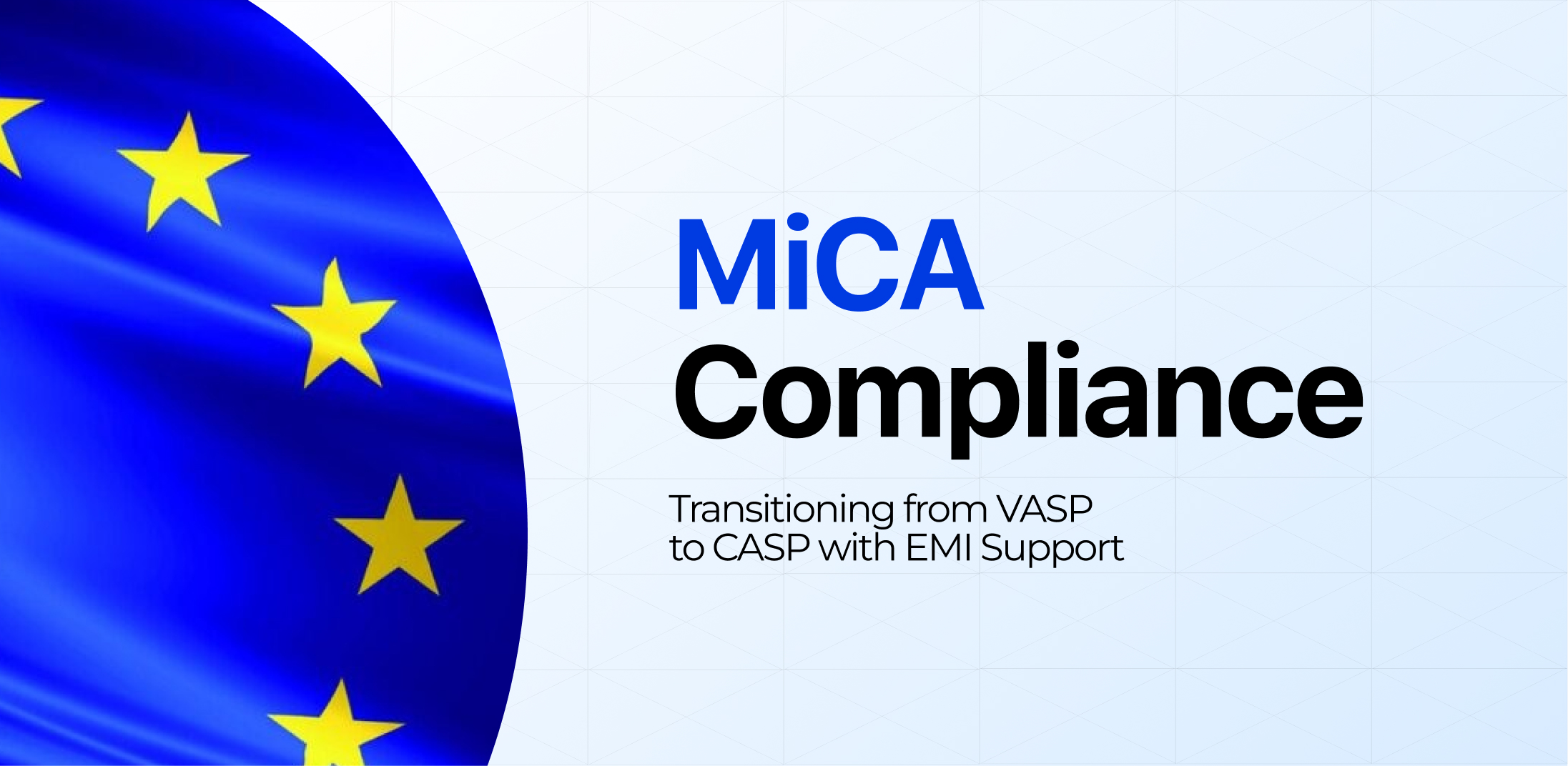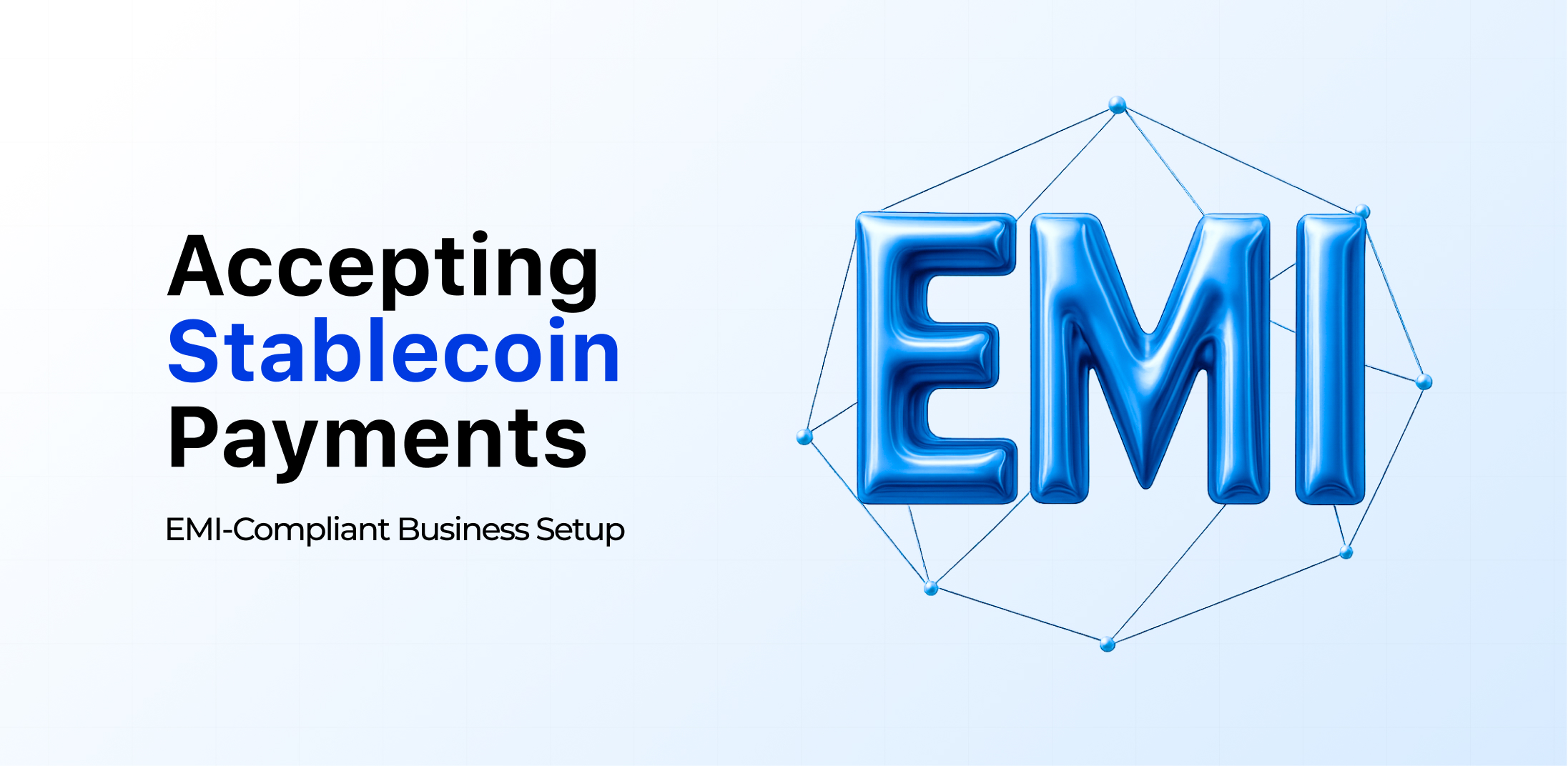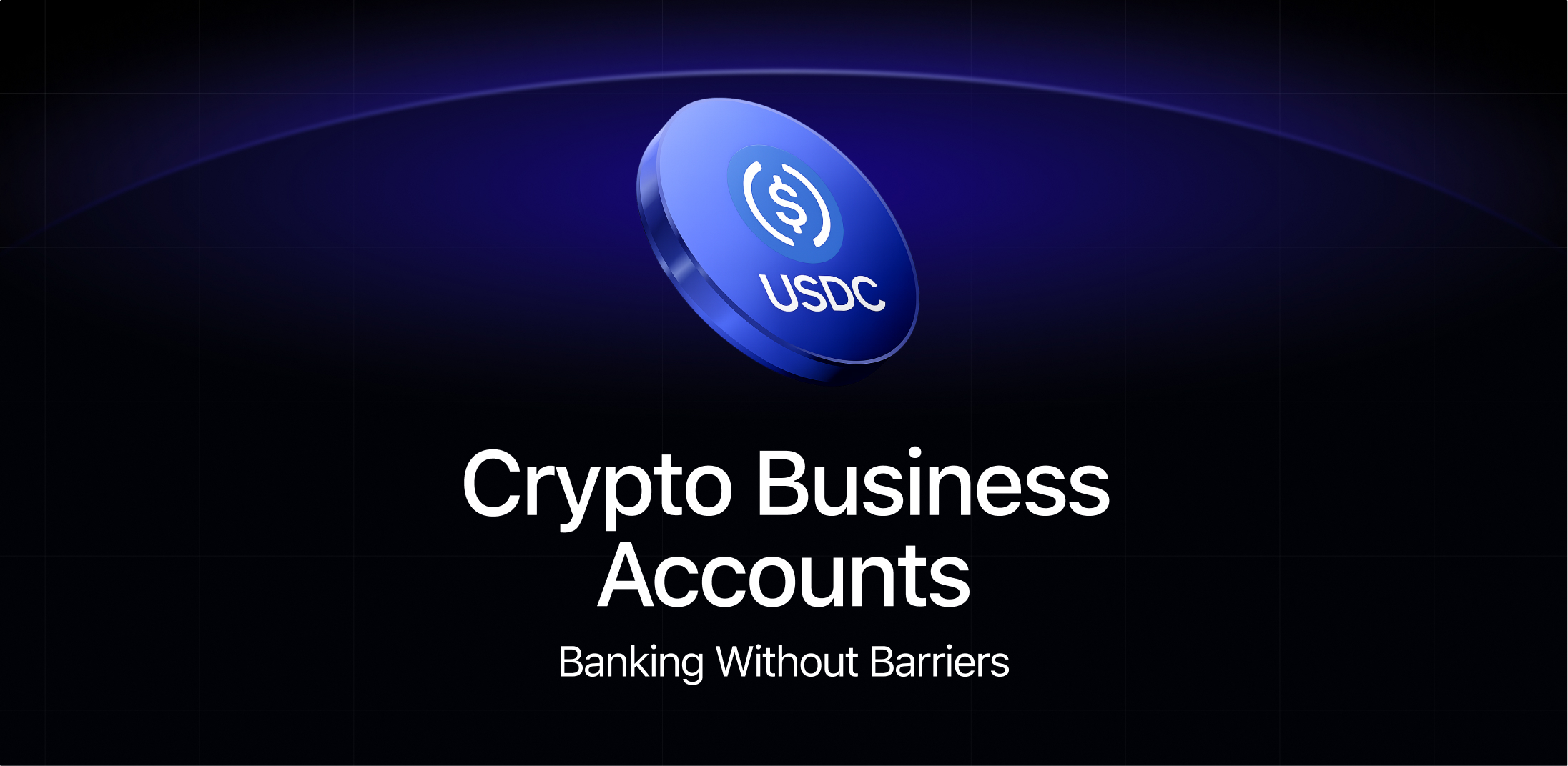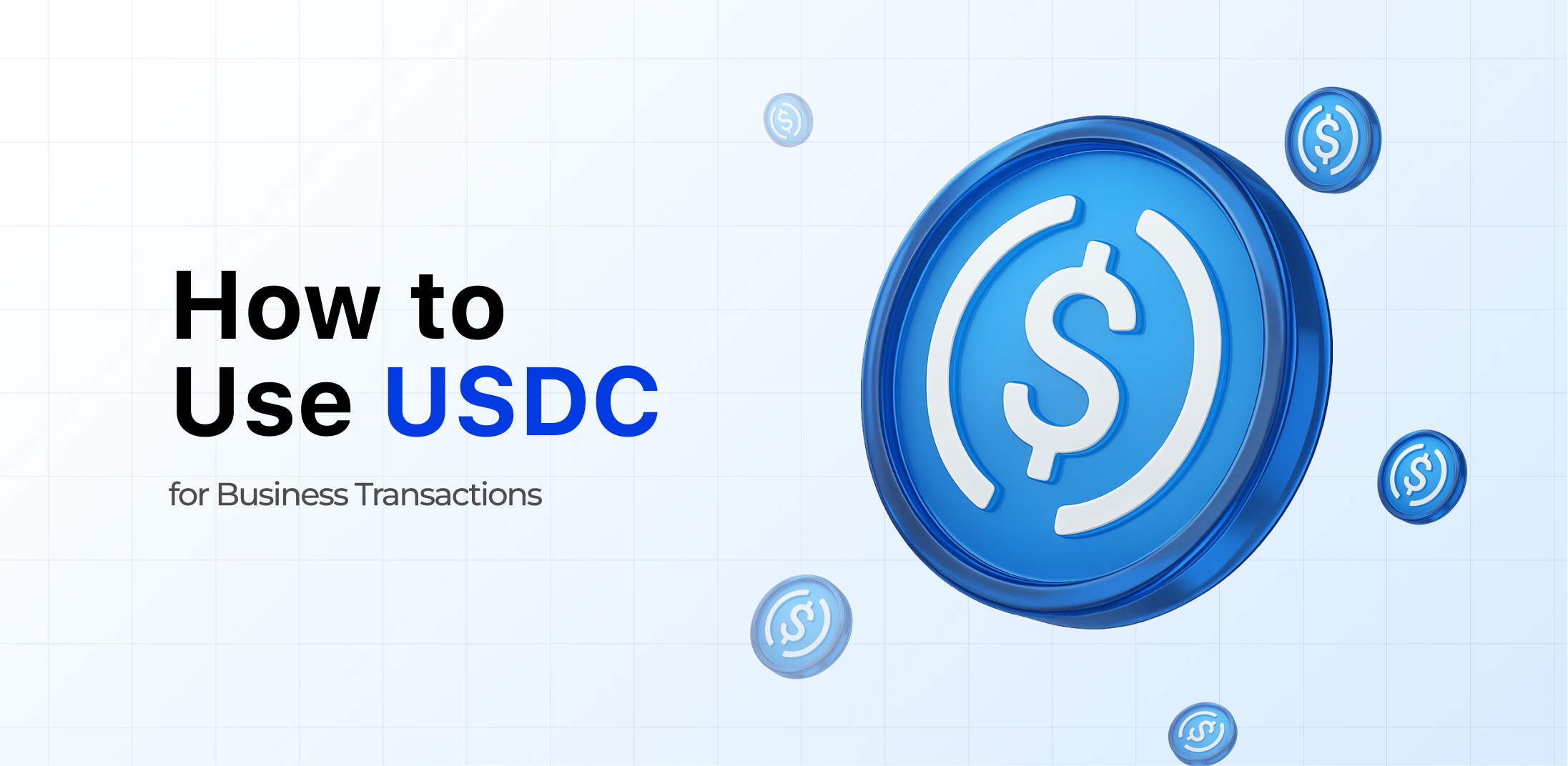The European Union is ushering in a transformative phase for the digital asset sector with the rollout of the Markets in Crypto-Assets (MiCA) regulation. Aimed at establishing a cohesive legal framework for crypto-assets across all member states, MiCA marks the EU’s first attempt at comprehensive oversight of crypto-assets, stablecoins, and related service providers. For crypto exchanges, startups, and fintech players, this regulation isn’t just a formality. It’s a pivotal shift in how they operate within the European market With initial provisions taking effect from June 30, 2024, and full Crypto-Asset Service Provider (CASP) compliance expected by mid-2025, MiCA will phase out inconsistent national approaches and replace them with a unified regulatory standard.
The transition period is short, and companies must act swiftly to align with the more demanding expectations that come with CASP status. Shifting from the role of a Virtual Asset Service Provider (VASP) to a CASP involves more than a label change. It signifies a wholesale upgrade in compliance obligations. Unlike the more limited scope of AMLD5, CASPs must now meet broader requirements around risk management, transparency, investor protection, and operational resilience – including issuing whitepapers, ensuring fund segregation, and maintaining minimum capital thresholds.
This VASP to CASP transition – Regulatory Compliance process will require foresight and strategic action. One of the most effective ways to streamline this evolution is by partnering with Electronic Money Institutions (EMIs). With their digital-first approach and regulatory expertise, EMIs can offer the tools and infrastructure crypto companies need to meet MiCA’s standards without compromising agility or innovation. In the sections that follow, we’ll break down what this transition means in practice, outline the critical compliance deadlines, and highlight how EMIs can be key allies in helping crypto businesses succeed under MiCA.
From VASP to CASP – Understanding the Change
The shift from VASP to CASP under the MiCA framework marks a major turning point in the regulation of crypto services across the European Union. Previously, the VASP model was governed by fragmented national rules with varying levels of oversight and enforcement. MiCA replaces this patchwork with a consistent, EU-wide framework for Crypto-Asset Service Providers (CASPs), bringing clarity and uniformity to the sector.
With stricter standards around licensing, transparency, and investor safeguards, this change demands serious preparation. For both emerging startups and established platforms, understanding this regulatory upgrade is critical to staying compliant and competitive in the evolving European crypto ecosystem.
Definition and Scope of VASPs Under Previous Regimes
Prior to the implementation of MiCA, crypto regulation across the EU was primarily shaped by the Fifth Anti-Money Laundering Directive (AMLD5). This directive required Virtual Asset Service Providers (VASPs) to register with national regulators and comply with fundamental AML and KYC obligations. However, the interpretation and enforcement of these rules varied widely across EU member states.
While jurisdictions like Estonia and Lithuania welcomed crypto firms with simplified registration frameworks, others introduced more rigid processes or offered little regulatory clarity at all. This regulatory inconsistency created confusion for businesses, encouraged jurisdiction shopping, and hindered the development of a cohesive crypto market within the EU.
Such disparities also raised concerns around investor protection and long-term scalability. The introduction of MiCA compliance aims to eliminate these discrepancies by establishing a single, harmonized regulatory framework – ensuring that all Crypto-Asset Service Providers (CASPs) operate under consistent, EU-wide standards.
What It Means to Become a CASP Under MiCA
Becoming a Crypto-Asset Service Provider (CASP) under the MiCA framework signals a major regulatory upgrade for crypto companies operating in the European Union. MiCA’s primary aim is to ensure regulatory harmonization, replacing the inconsistent national VASP rules with a unified standard that applies across all EU member states.
With a single CASP license, providers gain the legal authority to operate throughout the bloc, simplifying expansion and boosting market confidence. Achieving CASP status requires compliance with a more robust set of obligations than those applied to VASPs. These include holding sufficient capital reserves, implementing strong governance and internal controls, and developing detailed risk management and consumer protection measures.
CASPs must also submit to regular regulatory audits and maintain transparent reporting practices. Beyond compliance, this transition unlocks important advantages – particularly improved access to regulated financial tools such as crypto EMI accounts, which support secure and compliant transaction flows. Overall, MiCA enhances the legitimacy, trust, and operational capability of the EU’s crypto service sector.
Key Compliance Challenges Startups and Exchanges Face

As MiCA transforms the regulatory landscape for digital assets across Europe, startups and crypto exchanges face a new set of compliance requirements – many considerably stricter than those under the former VASP frameworks. While MiCA brings enhanced legal clarity and broader market opportunities, the process of obtaining full Crypto-Asset Service Provider (CASP) licensing presents complex hurdles that can strain internal teams and slow down product launches.
Meeting these demands involves establishing robust governance policies, maintaining adequate capital reserves, implementing comprehensive reporting protocols, and ensuring the protection of client assets. For emerging startups and rapidly scaling platforms, these obligations can be particularly daunting, especially without prior experience in navigating extensive financial regulations.
This section highlights the key compliance challenges that crypto firms encounter under MiCA and provides practical guidance on how to address them – helping businesses achieve a more efficient and successful integration into the regulated European crypto market.
Licensing and Passporting
Under MiCA, crypto companies seeking a CASP license must submit their applications to the relevant regulatory authority in their home EU country. These competent authorities carefully evaluate each application to verify compliance with strict requirements covering capital sufficiency, corporate governance, risk controls, and client protection measures.
The review process includes in-depth due diligence, such as vetting key executives and analyzing the applicant’s business model. A major benefit introduced by MiCA is the EU-wide passporting mechanism for licensed CASPs. Once a provider obtains authorization in one member state, it can offer its services across all EU countries without the need for additional licenses.
This unified approach removes the obstacles created by inconsistent national regulations, allowing crypto businesses to scale operations efficiently and access a wider market. Passporting facilitates smoother market entry and helps build a more cohesive and competitive crypto landscape throughout Europe.
Risk Management, Legal, Custody, and Safeguarding Requirements
MiCA introduces stringent obligations around risk management, asset custody, and safeguarding protocols to enhance the security and stability of the EU’s crypto market. Under this framework, Crypto-Asset Service Providers (CASPs) are required to establish solid governance systems with clear role allocation, robust internal controls, and independent compliance oversight.
This includes appointing experienced executives and risk officers to oversee day-to-day operations and regulatory alignment. A core requirement is the strict separation of client assets from the company’s own funds. CASPs must use secure custody solutions – whether in-house or via regulated third parties – and maintain constant oversight through regular independent audits and security evaluations to ensure transparency and accountability.
MiCA also brings crypto firms in line with the EU’s broader financial crime regulations, enforcing full AML/CFT compliance. Providers must conduct thorough customer due diligence (CDD), track transactional behavior, and report suspicious activities. These measures serve as foundational pillars for a safer, more trustworthy digital asset environment across Europe.
Token Issuance and Whitepaper Compliance
MiCA establishes a comprehensive regulatory framework for the issuance of crypto-assets, classifying them into three key categories: asset-referenced tokens (ARTs), e-money tokens (EMTs), and other crypto-assets not linked to specific assets. Each classification is subject to distinct compliance obligations aimed at enhancing transparency, investor protection, and legal certainty.
Token issuers conducting public offerings within the EU must now prepare a whitepaper that meets MiCA standards. This document must include clear disclosures about the issuer’s identity, the function and purpose of the token, investor rights, and any potential risks. In contrast to the minimal requirements seen in past token offerings, these whitepapers must be submitted to the relevant authority and published for public access before launch.
For ARTs and EMTs, which are tied to underlying assets or fiat currencies, stricter obligations apply. These include capital buffers, operational controls, and reserve mechanisms to ensure token stability. MiCA’s structured approach aims to legitimize token issuance while safeguarding users and the broader financial ecosystem.
Role of EMIs in Supporting MiCA-Compliant CASPs

As the crypto industry adapts to the new regulatory landscape shaped by MiCA, partnering with Electronic Money Institutions (EMIs) has become a strategic necessity. EMIs are fully licensed financial institutions authorized to issue IBANs, manage client funds, and support international transactions – all through secure, digital-first platforms. These capabilities are increasingly vital for Crypto-Asset Service Providers (CASPs) aiming to operate compliantly within the EU.
MiCA introduces a wide range of operational and regulatory requirements, from capital controls and AML/CFT compliance to asset safeguarding and governance protocols. EMIs, with their robust regulatory frameworks and proven track records, can provide the technical and legal support that crypto firms need to navigate this shift effectively. Beyond regulatory alignment, EMIs bring valuable infrastructure benefits: streamlined onboarding, integrated compliance tools, fund segregation, and real-time payment processing.
These features help startups and exchanges reduce compliance burdens while focusing on growth and product development. In the following sections, we’ll examine how EMIs play a critical role in supporting the VASP to CASP transition, offering the banking infrastructure, custody safeguards, and payment solutions essential for success under MiCA. For crypto businesses, the right EMI partner isn’t just helpful – it’s a competitive edge.
EMI vs. Traditional Bank Support
For crypto companies working toward MiCA compliance, Electronic Money Institutions (EMIs) are increasingly proving to be a more agile and crypto-compatible alternative to traditional banks. While conventional banks offer a legacy of reliability, many remain hesitant to engage with crypto clients – often citing elevated regulatory exposure, unclear risk parameters, or restrictive internal policies. This hesitance can lead to lengthy onboarding, outright rejections, and limited service availability for crypto businesses.
EMIs, on the other hand, are purpose-built for the digital economy. They prioritize fast onboarding, sometimes within 48–72 hours, and provide multi-currency IBANs that streamline cross-border transactions – an essential feature for crypto startups operating across multiple EU jurisdictions. Their digital-first approach is tailored to the needs of fast-scaling businesses looking to stay operationally agile. Unlike banks, EMIs are designed with modern compliance in mind. With tools like automated KYC/KYB, transaction monitoring, and AML/CFT integration, EMIs help CASPs meet MiCA’s regulatory demands without bottlenecks.
Their platforms are also developer-friendly, supporting APIs for smooth integration with exchanges, wallets, and accounting systems. In short, for CASPs navigating Europe’s evolving crypto framework, partnering with an EMI offers the speed, compliance infrastructure, and technical flexibility needed to scale. In the MiCA era, EMIs are not just suitable – they’re strategic.
EMI as a Payment Partner for CASPs
Electronic Money Institutions (EMIs) are increasingly vital as payment partners for Crypto-Asset Service Providers (CASPs) striving to meet MiCA’s stringent regulatory standards. A key requirement under MiCA is the protection of client assets, and EMIs are specifically authorized and structured to fulfill this obligation. Through the provision of dedicated IBANs and secure, ring-fenced accounts, EMIs ensure a clear separation between customer funds and company resources – crucial for both compliance and institutional credibility.
EMIs also facilitate compliant fiat on- and off-ramp solutions, allowing CASPs to convert crypto into fiat currencies (and vice versa) under strict regulatory oversight. These are often high-risk processes from a compliance standpoint, particularly concerning anti-money laundering (AML), counter-terrorist financing (CFT), and fund traceability. EMIs bring robust infrastructure and deep regulatory knowledge to support these operations securely.
Moreover, many EMIs offer tools such as real-time fund reconciliation, automated compliance reporting, and segregated account models, which directly align with MiCA’s principles of transparency and consumer protection. For CASPs expanding across the EU, these features reduce regulatory friction and enhance operational scalability. In this evolving landscape, EMIs are not merely optional facilitators – they are strategic partners that provide the regulatory backbone necessary for CASPs to operate compliantly and confidently across Europe.
Choosing an EMI Partner for MiCA Compliance
Choosing the right Electronic Money Institution (EMI) partner is a vital decision for Crypto-Asset Service Providers (CASPs) looking to achieve full MiCA compliance. Given the complex regulatory requirements and evolving landscape, it’s crucial to work with an EMI that not only holds the appropriate licenses but also offers customized solutions, cutting-edge technology, and a thorough understanding of the unique challenges faced by crypto businesses.
An ideal EMI partner can simplify the onboarding process, guarantee secure safeguarding of client assets, facilitate multi-currency transactions, and deliver transparent reporting capabilities aligned with MiCA regulations. Moreover, the best EMIs stay ahead of compliance demands, provide scalable services tailored to business growth, and adapt quickly to regulatory changes.
In the sections ahead, we’ll explore essential criteria for selecting an EMI partner. It enables you to make a well-informed choice that reinforces your compliance framework and supports your expansion within the European crypto market.
What to Look for in a MiCA-Friendly EMI
When choosing an EMI partner for MiCA compliance, several crucial considerations come into play. Primarily, it’s vital that the EMI aligns closely with MiCA’s regulatory requirements, showcasing strong governance practices, effective AML/CFT measures, and clear, transparent client fund protection.
An onboarding process that is crypto-friendly is also important – seek out providers experienced with crypto ventures that offer fast, fully digital account setups without unnecessary hold-ups or refusals. Equally important is the EMI’s ability to integrate smoothly with your CASP systems. This includes compatibility with wallets, trading platforms, and payment processors, ideally through APIs or pre-built connectors, to streamline operations and boost automation.
The licensing jurisdiction is another key factor. EMIs regulated in crypto-supportive jurisdictions such as Lithuania, Estonia, and Ireland often offer quicker licensing, adaptable compliance frameworks, and EU-wide passporting privileges. Choosing a partner in these regions can greatly ease your journey toward MiCA compliance and foster sustainable growth.
EMI Services That Streamline CASP Operations
Electronic Money Institutions (EMIs) deliver a suite of services that greatly streamline the everyday operations of Crypto-Asset Service Providers (CASPs) navigating MiCA compliance. Their offerings include real-time payment capabilities, enabling fast and reliable fund transfers both within the EU and internationally. With multi-currency accounts and integrated foreign exchange (FX) management tools, EMIs empower CASPs to conduct cross-border transactions smoothly while optimizing currency conversion expenses.
By providing access to key payment systems such as SEPA and SWIFT, EMIs ensure seamless fiat currency on-ramps and off-ramps – crucial for client transactions and liquidity management. In addition to payment services, EMIs supply robust reporting solutions that help CASPs adhere to MiCA’s strict transparency and regulatory mandates.
Many EMIs support automated compliance reporting and facilitate audit processes by maintaining thorough transaction logs and ensuring clear segregation of client funds. This continuous operational assistance reduces administrative workload, mitigates regulatory risks, and keeps CASPs fully prepared for audits – allowing them to concentrate on scaling their business while maintaining full compliance with MiCA requirements.
Transitioning to CASP with EMI Support
In the fast-changing regulatory landscape introduced by MiCA, numerous crypto startups and exchanges are tasked with the challenging process of evolving from Virtual Asset Service Providers (VASPs) to fully authorized Crypto-Asset Service Providers (CASPs). This case study showcases how a Europe-based crypto exchange effectively managed this shift by partnering with a progressive Electronic Money Institution (EMI).
Background and Challenges Faced by the Crypto Startup
Operating across several EU member states, the startup faced pressing deadlines to obtain a CASP license while ensuring uninterrupted service for its customers. Major challenges included complying with strict capital and governance rules, safeguarding client assets, and upgrading compliance frameworks to meet MiCA’s requirements – all without disrupting day-to-day operations.
How the EMI Partnership Facilitated a Faster MiCA Transition
Collaborating with a crypto-specialized EMI licensed in Lithuania, the exchange benefited from swift onboarding and access to multi-currency IBAN accounts, enabling efficient cross-border payments. The EMI’s advanced digital infrastructure supported automated AML/CFT compliance and real-time transaction oversight, significantly easing regulatory burdens. This alliance helped the startup meet licensing deadlines ahead of schedule and leverage EU passporting to broaden its reach.
Key Results and Insights for Other CASPs
The partnership guaranteed smooth business continuity during regulatory changes, avoided costly downtime, and boosted trust among investors and users alike. This example highlights the value of choosing EMI partners with strong regulatory expertise and crypto-centric technology. For CASPs preparing for MiCA, early collaboration with EMIs is a vital strategy to navigate compliance complexities and drive scalable growth across Europe.
Ultimately, this case proves that teaming up with EMIs is often a crucial factor for crypto enterprises aiming to succeed under MiCA’s rigorous framework.
Future-Proofing Crypto Businesses with EMI + CASP Setup

In the rapidly shifting realm of crypto regulation, savvy businesses recognize the strategic benefit of partnering with Electronic Money Institutions (EMIs) early, alongside securing their Crypto-Asset Service Provider (CASP) licenses. This combined strategy not only guarantees alignment with current MiCA standards but also builds a strong foundation for long-term growth and adaptability as regulatory frameworks evolve.
Teaming up with an EMI from the start grants crypto firms immediate access to compliant financial infrastructure – such as multi-currency IBAN accounts, instant payment capabilities, and robust custody solutions. These services are vital for startups and exchanges aiming to expand beyond Europe, providing smooth fiat on- and off-ramp processes and the flexibility required to efficiently serve global customers. Additionally, integrating EMI services with CASP authorization boosts investor confidence by demonstrating a firm commitment to regulatory compliance and sound risk management.
This level of transparency is crucial for securing investment, establishing partnerships, and standing out in competitive markets. Looking forward, the EU’s crypto regulations are expected to broaden to cover new technologies and associated risks. Businesses equipped with a flexible EMI + CASP framework will be better positioned to adapt rapidly to regulatory updates without disrupting operations or incurring excessive compliance costs.
Ultimately, early engagement with EMIs alongside CASP licensing goes beyond mere compliance—it represents a strategic move to future-proof crypto enterprises, enabling scalable expansion, international reach, and enduring investor trust amid an evolving regulatory landscape.
Conclusion
The crypto regulatory framework in Europe is experiencing a significant shift as Virtual Asset Service Providers (VASPs) transition to fully authorized Crypto-Asset Service Providers (CASPs) under MiCA. This change ushers in a new chapter defined by unified regulations, stronger investor safeguards, and increased operational transparency – raising the standards for compliance and market access.
Within this evolving landscape, forming a partnership with an Electronic Money Institution (EMI) is more than just beneficial – it’s a strategic imperative. EMIs offer the necessary compliant infrastructure, advanced digital solutions, and financial services that help CASPs navigate MiCA’s stringent requirements efficiently. By ensuring secure custody of client assets, supporting multi-currency accounts, and enabling smooth cross-border payments, EMIs empower crypto businesses to focus on growth while staying fully compliant.
As the 2025 MiCA implementation deadline nears, proactive action is crucial. Early alignment with the right EMI can be the key to avoiding regulatory hurdles and gaining a competitive edge. Embracing these changes today will enable startups and exchanges to flourish within Europe’s dynamic crypto environment, turning compliance challenges into opportunities for innovation and expansion.







